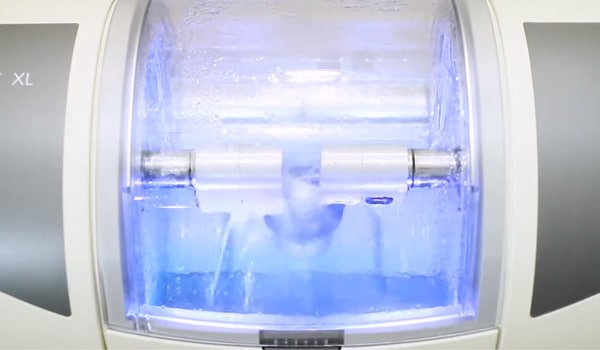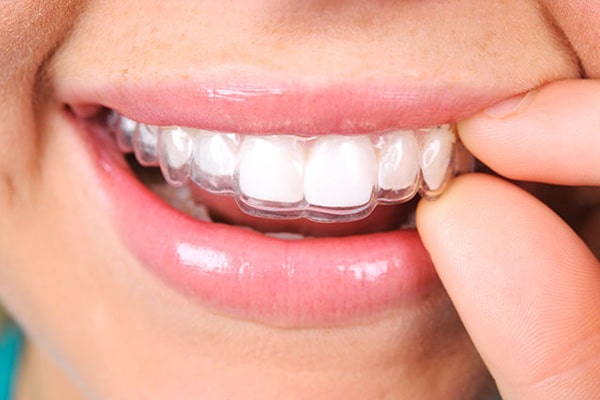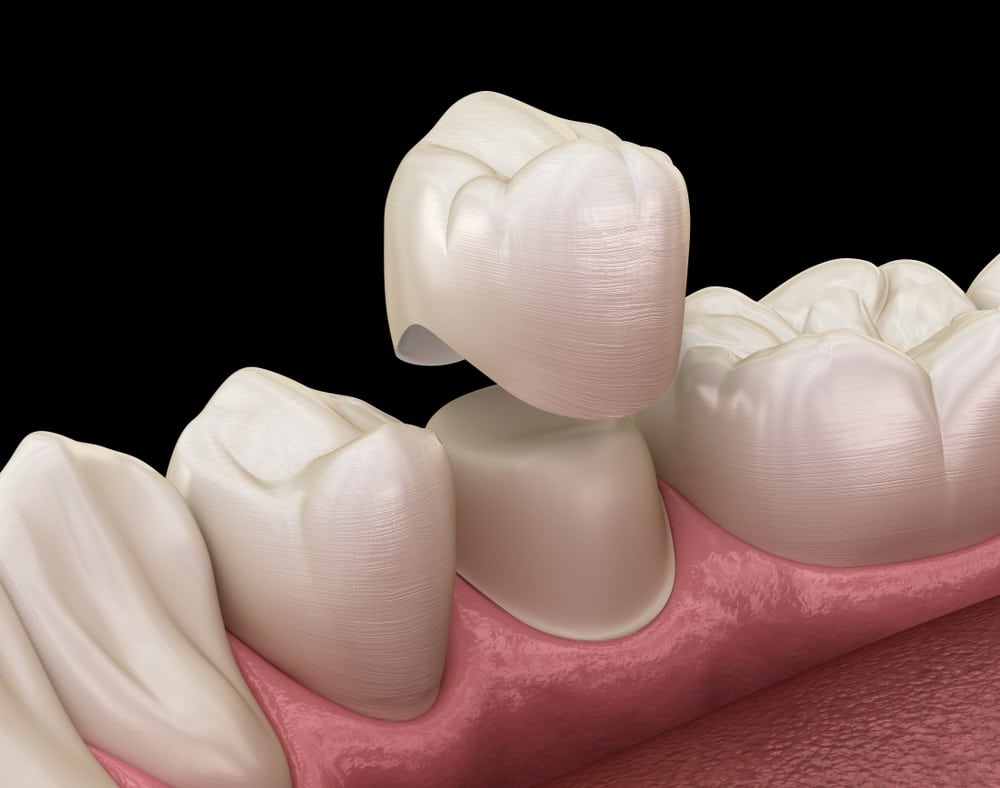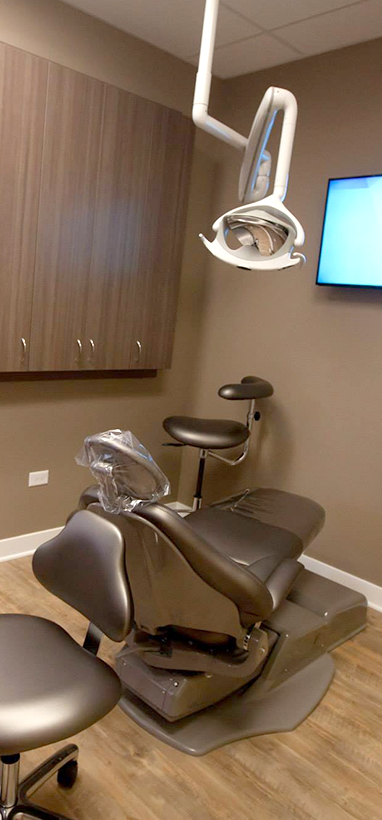1516 Legacy Cir, Naperville, IL 60563
Oral Cancer: Causes, symptoms, stages and treatment
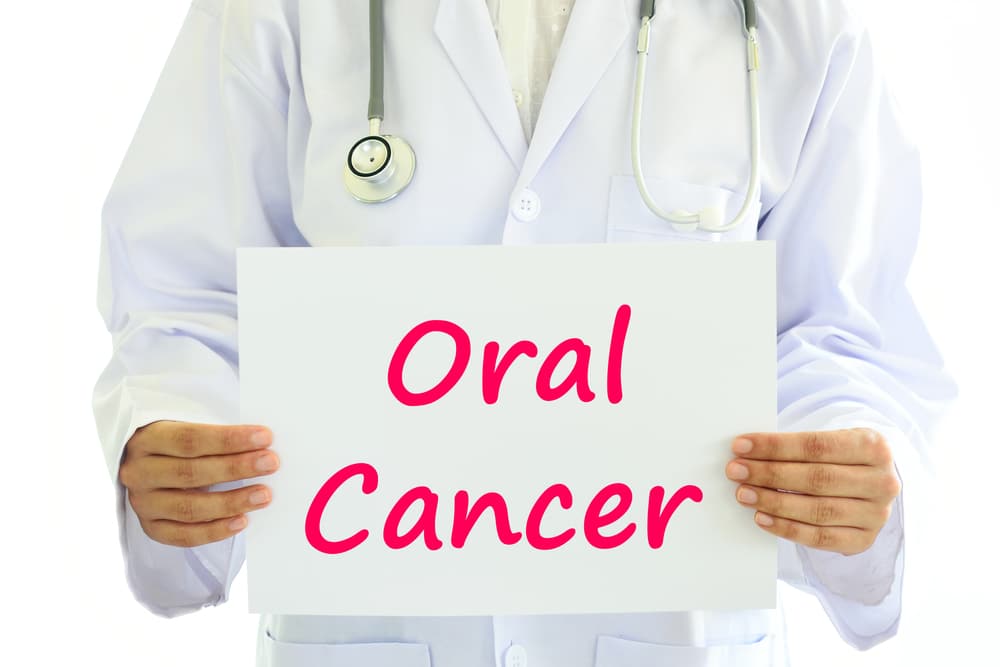
Whether you noticed a new bump or sore during your daily tooth-brushing routine or the dentist discovers an anomaly during your biannual checkup, oral cancer can be a scary and surprising discovery. But exactly what is oral cancer?
A cancer of the mouth and throat, oral cancer develops in the tissue and can affect the mouth, tongue, and lips. This can be a shocking realization, but when caught early, can be treated effectively.
Understanding and early detection are the keys to effectively treating this type of cancer. This is why routine teeth cleaning at the dentist is so important, as professionals like those at Living Well Dental can detect early signs of mouth cancer. So whether you’ve been diagnosed with oral cancer and want to learn more, or are worried about an unexplainable change in your mouth’s condition, we are going to cover all that you need to know about mouth cancer in this post.
What is oral cancer?
Before we get into the details, let’s answer the question – what is oral cancer?
A type of head and neck cancer, oral cancer falls under the category of oral and oropharyngeal cancer that affects the mouth and lining of the throat. Mouth cancer will usually develop in the mouth as a growth or sore. There are various places oral cancer can appear, such as with oral cancer on gums, oral cancer on the lip, oral cancer on the tongue, as well as oral cancer on the inner lining of cheeks, floor of the mouth, and roof of the mouth.
You may be wondering, “what does oral cancer look like?” Appearing as a growth or lesion, signs of mouth cancer can appear anywhere on or inside the mouth, sometimes as a red sore, or even as white patches. With more than 49,000 cases of oral cancer diagnosed each year, it’s important to watch out for oral cancer signs to ensure early detection.
Your dentist can often detect oral cancer first during routine teeth cleaning. Noticing the early signs of mouth cancer can help keep cancer from getting worse and with biannual trips to the dentist, you can have added peace of mind.
Mouth Cancer Symptoms
Whenever you go to the dentist, it’s important to share any changes you’ve noticed with your teeth and mouth that may signal oral cancer symptoms. Early signs of mouth cancer may look like white patches in the mouth or white areas with a reddish border. While this doesn’t for sure signal oral cancer, it can be a sign of early-stage mouth cancer.
More noticeable signs of mouth cancer include:
- Sores that won’t heal
- Unexplainably loose teeth
- Bleeding from the mouth
- Numbness in the mouth
- Swelling in the jaw
- Difficulty chewing or swallowing
- Mouth pain
- Ear pain
There are a range of oral cancer signs, but it’s important to get checked out if you have any concerns. If you notice or are worried about any mouth cancer symptoms, visit your dentist so they can take a closer look as soon as possible.
Oral Cancer Stages
Like many cancers, oral cancer is classified into 4 stages. With oral cancer starting in the mouth, it can become a sore that you or your dentist will visibly see. To understand more, let’s explain the different stages.
During stage 1, early-stage mouth cancer is classified as a tumor that is 2 centimeters or smaller. At this point, cancer has not yet spread.
Next, in stage 2, the tumor is between 2-4 centimeters. Like with stage 1, during stage 2 cancer still hasn’t spread to other locations, like the lymph nodes.
In stage 3, the cancer is larger than 4 centimeters and either hasn’t spread to the lymph nodes or is any size and has spread to the lymph nodes. However, at this point, it is likely to have not yet spread to another location beyond the mouth or lymph nodes.
Stage 4 signals cancer has spread to the lymph nodes, nearby tissue, or other parts of the body. This does not require that the tumor is a specific size, but that it has spread beyond the mouth and lymph nodes.
To ensure you get oral cancer treatment as soon as possible, it will be important to notice any changes in your mouth to ensure you and your dentist can catch oral cancer in the earliest stage possible.
Oral Cancer Causes
Mouth cancer develops when cells on the mouth or lips form mutations in their DNA that cause them to continue growing and dividing. These fast-growing cells then accumulate to make a tumor that can spread beyond the mouth.
One of the biggest oral cancer causes is tobacco use. From cigarettes to chewing tobacco, cigars, and pipes, those who consume tobacco products are at greater risk of developing oral cancer.
Beyond tobacco use, there are some other contributing factors to developing oral cancer. These include:
- A family history of oral or other cancers
- Previously diagnosed oral cancer
- Sun exposure on lips
- A weakened immune system
- Heavy alcohol use
- Poor nutrition
- Genetic syndromes
- Human Papillomavirus (HPV)
Additionally, men are actually twice as likely to develop oral cancer than women.
With all these risk factors and causes in mind, your biannual visits to the dentist are key to detecting mouth cancer in the early stages to increase your chances of recovery.
Oral Cancer Survival Rate
The oral cancer survival rate depends on the stage and whether cancer has spread by the time it is detected. To understand this, let’s explain the difference between localized, regional, and distant cancer.
Localized cancer signals that the cancer is only in one area and hasn’t yet spread. At this point, the National Cancer Institute projects that there is an 84% survival rate.
Regional cancer means that cancer has spread to tissue that is nearby, like the lymph nodes. At this point, the survival rate is estimated around 64%.
Lastly is distant cancer. The last of the oral cancer stages, signals that cancer has spread to other parts of the body. The National Cancer Institute has survival rates at this point estimated at around 38%.
While oral cancer can spread, making it harder to treat, you can stop cancer from spreading too rapidly by getting any concerning spots looked at by your dentist or doctor immediately upon noticing them. When untreated, oral cancer may not just spread throughout the mouth, but to the head, neck, and eventually the rest of the body.
If you have symptoms that last more than 2 weeks, we recommend going in for a professional to take a better look. With a timely diagnosis and mouth cancer treatment, you can increase your chances of a full recovery.
Oral Cancer Treatment
Once your dentist or doctor has found signs of mouth cancer, it’s important to seek proper treatment. There are a few options based on the stage of the cancer, but the treatment routes include surgery, radiation therapy, chemotherapy, targeted drug therapy, and immunotherapy. Let’s go over each to get a better understanding.
Surgery is used as a treatment to remove the tumor, remove the cancer that has spread to the neck, or to reconstruct the mouth after an operation was performed to remove the cancer. While surgery can effectively remove the tumor, this choice can affect your appearance or the functionality of your mouth, depending on location. In turn, this can impact your ability to eat, swallow, and speak. However, your doctor can help you prepare for these potential changes.
Next is radiation therapy. In its simplest definition, radiation treatment simply uses high-energy beams to kill cancer cells. This is typically used after surgery, but may be used in the case of early-stage mouth cancer and combined with chemotherapy before reverting to surgery. With this treatment choice, it’s important that your teeth are particularly healthy, so your dentist will need to perform a thorough exam before beginning radiation to make sure they are strong.
Next is chemotherapy. As an oral cancer treatment, chemotherapy uses chemical agents systemically to kill the cancer cells. This can be used alone or in combination with other treatments for an effective result.
Targeted drug therapy is, much like the name indicates, a drug that targets a specific area within the cells, typically impeding the protein action within those cells. It’s often used as one form of treatment for mouth cancer and can be used alone or in conjunction with radiation or chemotherapy.
Last is immunotherapy. Ultimately, this option utilizes your own immune system to fight the cancer. However, this option is typically saved for more advanced mouth cancer that has not had success with other treatments.
Conclusion
Oral cancer can be a scary discovery, but with early detection and the proper treatment, it can be managed. This is why it’s so important to maintain your biannual dentist visits so that a professional can detect any early signs of mouth cancer to ensure early detection and treatment, if needed, is effective.
At Living Well Dental Group, we take great care at documenting even the slightest changes in your mouth — even during simple, routine visits for a quick teeth cleaning. Whether you’re worried about a change in your mouth, or just want to come in for a routine check-up, call us at 630-505-1516 or schedule an appointment online today.


